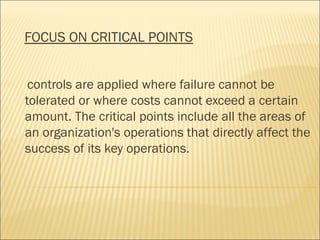The document discusses the process of controlling in an organization. It defines controlling as monitoring, comparing, and correcting work performance and results. There are three main steps to controlling: 1) measuring actual performance, 2) comparing actual performance to standards, and 3) taking managerial actions to address any deviations. Controlling applies to both employee performance and machinery/operations. It is important for effective planning in an organization.























































